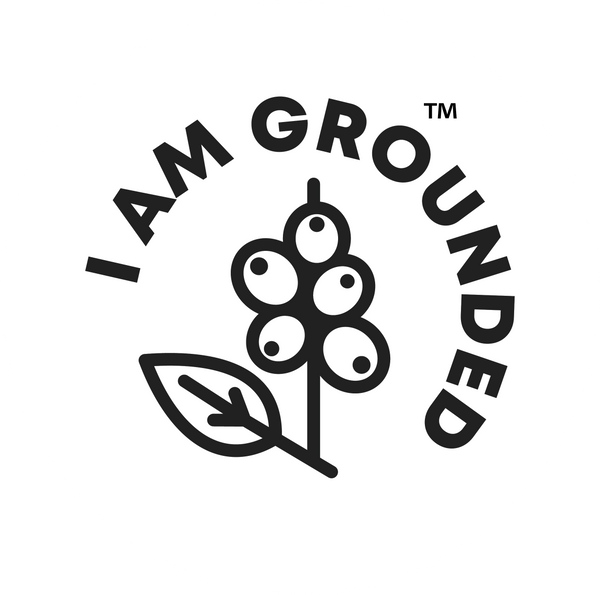Why coffee fruit is a superfood!

Hi!
My name is Vanessa and I am a co-founder of I Am Grounded.
The most common question I get about I Am Grounded is around coffee being a fruit. So, I wrote this informative and easy to digest blog for any curious minded people to learn more about coffee and its fruit.

By now you may have guessed that coffee is actually a fruit! This juicy red fruit doesn't taste like coffee instead resembles a berry-like flavour. The cherry is picked, washed /naturally processed, sorted, and de-pulped in order to retrieve the small seeds it encompasses. The seeds will eventually make their way down the coffee chain ending up in your home country either roasted or as green beans, and eventually brewed.
But where did it all begin?
About 1000 years ago, the Oromo people of Ethiopia made what was arguably the world's first energy snack, mashing together goat fat and coffee cherries for a natural buzz. In the 1800's coffee became an imported good along with sugar and cocoa and began its notoriety in European trading house. The caffeine would give traders the burst of energy they needed to trade stocks and conduct business. As coffee made its way across the globe, our addiction to this delicious brew also grew, and today we consume roughly 3 billion cups a day.
Meanwhile at origin, when not upcycled the remaining pulp and skin of the coffee fruit, is thrown into a pile of other cherries, breaking down and leeching into the surrounding environment.
The Environmental Problem

Each year, millions of coffee drinkers sip on their coffees without knowing the truth behind their cup. On a global scale, the coffee industry produces approximately 10 billion kilos of coffee fruit waste annually to make those cups of coffee. Talking about carbon dioxide emissions, that’s about 16.6 million tonnes of CO2 or 0.2% of the world's CO2 emissions. To understand the huge impact, we must understand first that coffee is actually a cherry that grows on a shrub, and at least 80% of the coffee fruit is wasted during processing. In fact, it is one of the only fruits where the seeds are consumed and not the fruit itself.
Packed Full of Antioxidants

Coffee fruit is rich in antioxidants, which are powerful compounds present in a variety of fruits, vegetables and superfoods that help fight free radicals to protect against oxidative stress and damage to cells. One type of these antioxidants is called flavonoids, which are a diverse group of those phytochemicals found in several fruits and vegetables. Flavonoids are often responsible for the amazing array of colours in most fruits and veggies. Not only that, flavonoids are also potent antioxidants that have even been known to help support your immune system as it functions properly. Furthermore, one specific polyphenol compound found in coffee fruit is chlorogenic acid, which helps to lower blood pressure and improve heart health. The antioxidants in the whole coffee fruit can be compared to 3 times more than Acai, with an ORAC value of roughly 343,900 μ mol TE/100g.If you want to read more about the benefits of antioxidants and a side-by-side comparison, we've found these particular studies to be informative.
Early studies further show that the coffee fruit actually helps contribute to your body's BDNF (Brain Derived Neurotrophic Factor), a protein essential for maintaining health cognition and other brain-related processes such as mood and sleep (British Journal of Nutrition). Although early days, this research is very exciting when considering that the brain's supply of BDNF protects it against mental illness, including depression and dementia.
Natural Caffeine
Coffee fruit is significantly lower in caffeine than the coffee bean and provides a gentle natural hit. Our Lemon and Blueberry bars each contain 20 mg of caffeine, which is the equivalent of having a green tea or a weak coffee.
Finally, you may be thinking, but what does it taste like! Despite popular belief, coffee fruit does not taste like a cup of coffee. Instead, being classified a stone fruit and essentially a berry, the fruit itself has a tart, sweet plum-like taste that blends very nicely with other flavours almost like honey does. When upcycled and used, the fruit can provide environmental and health benefits. Whether you're a busy on the goer, adventure enthusiast, yogi or living plant-based, you deserve to snack better, our products prioritise the three P's, People, Planet, Purpose.---Contributor - Vanessa Murillo, I Am Grounded Co-Founder
References
Details of the amount of Polyphenols & Antioxidants in the Coffee Cherry Pulp.
Effect of Whole Coffee Fruit Extract on BDNF (whole coffee fruit NOT pulp).
Potential alternative uses of coffee by-products by the International Coffee Organisation - good overview of positive potential for coffee waste by-product use and benefits.
Article on the wet process management of the coffee cherry and the negative impacts on waterways and river systems - Specifically in Ethiopia.
